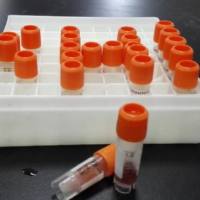FISH Techniques
互联网
1040
The impression is sometimes given that fluorescence in situ hybridization (FISH) studies are simply a matter of buying a kit with the right DNA probe, following the supplier’s instructions, and reading a simple positive or negative result. In practice, getting a reliable result from a FISH study requires experience, time spent in testing to determine the precise local conditions needed for optimum hybridization, and time spent in assessing and scoring positive and negative controls to determine local baseline levels. The techniques described here will provide some useful guidelines about those aspects of the procedures that can be varied and those that are critical, and advice about the origin and resolution of commonly encountered problems. For simplicity, it will be assumed that the material to be studied is a fixed cell suspension, which is what is usually available in a cytogenetics laboratory. It is possible to study air-dried bone marrow or blood films, fresh tumor touch prints, and wax-embedded sections of solid tumors. The techniques are very similar to those described here (1 ,2 ). It is also possible to perform FISH studies on preparations that have already been banded and analyzed as part of a conventional cytogenetics study. However, the simplest and most reliable methods use freshly spread cells, and this is what is described here.








